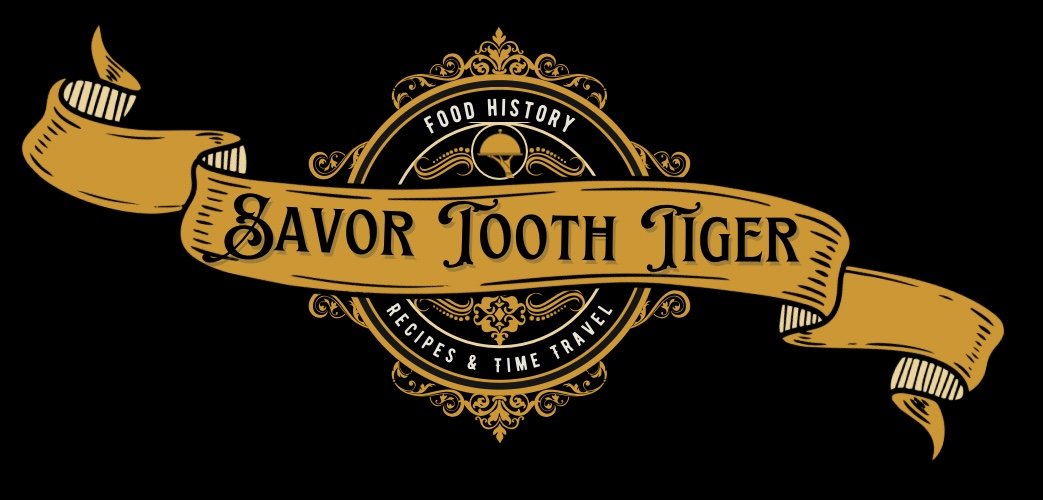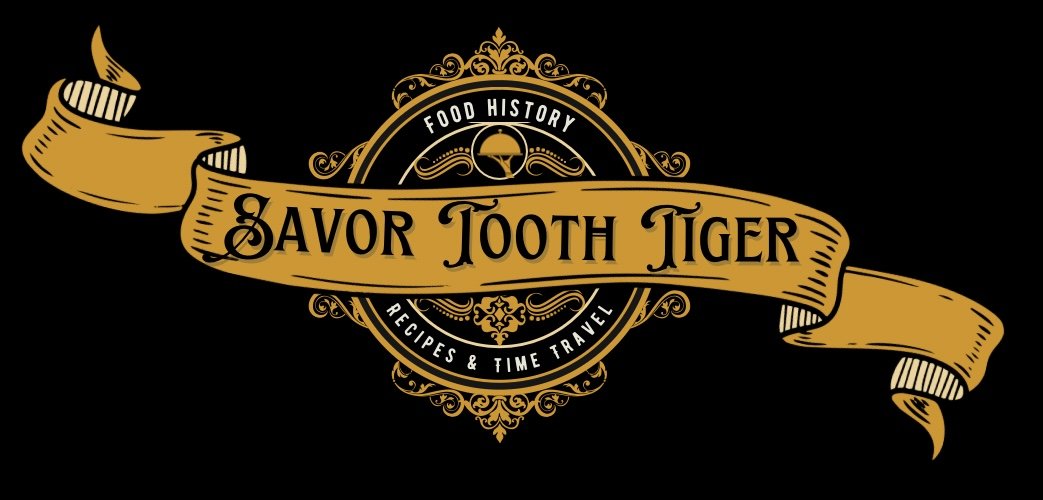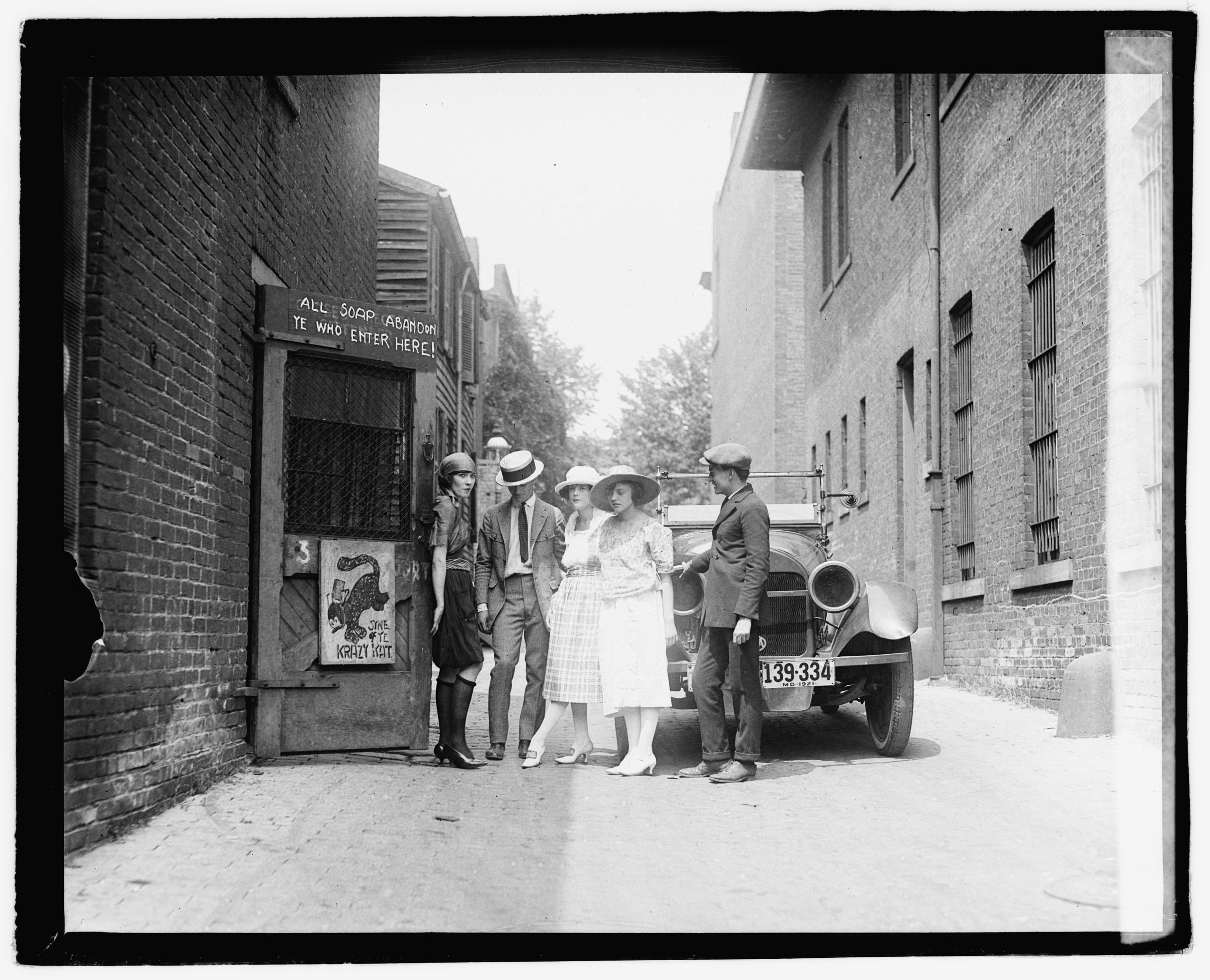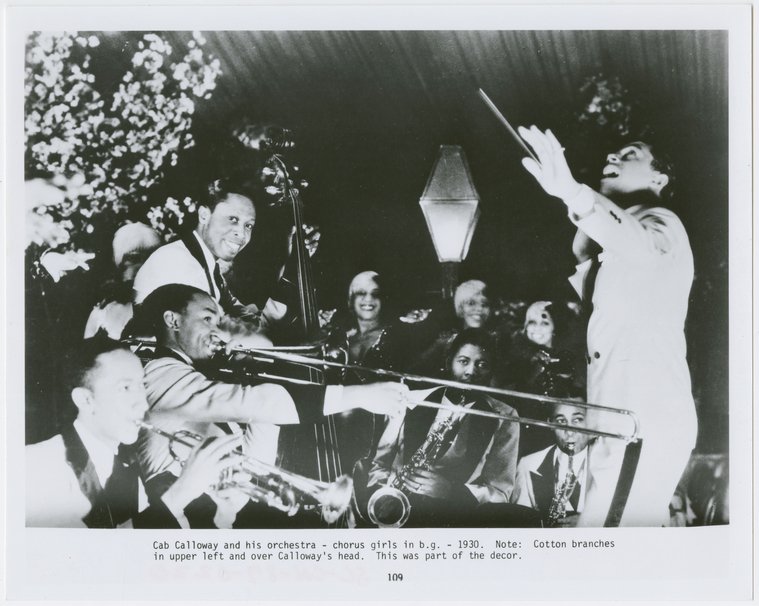Prohibition Cocktail Party
We’re going back to January 16th of 1920 just before Prohibition went into effect. We’ll make a cocktail and prohibition era cocktail snacks. But first… On the eve of prohibition, before midnight… Americans enjoyed a final legal beer with friends. THEN there were dramatic farewell funerals for alcohol (a symbolic death of a fictional person, called John Barleycorn). Some parties gave out souvenir coffins to commemorate the sad day in history. Why has no one turned this into a movie yet? I want to see a Gothic murder mystery on the eve of prohibition in a creepy hotel where a fictional funeral turns into a real murder! Someone call Tim Burton.
It would take 13 long, dangerous years for the 18th amendment to get repealed but as you can imagine…those parties were even more fun.
The Della Robbia Room of the Vanderbilt Hotel
On that note, lets make a cocktail. The Bee’s Knees cocktail. It’s definitely prohibition era but its origins are disputed. I read that this cocktail has ties to Molly Brown, as in the Unsinkable Molly Brown, famous Titanic survivor. And if that’s true I’m going to lose my mind! Anyway, it was likely created (like many prohibition cocktails ) to cover the flavors of synthetic gin. It was later referred to as bathtub gin because…it was made in bathtubs. Industrial alcohol was permitted through the Volsted Act. but was required to be denatured (poisioned) with wood alcohol (methanol), benzene, formaldehyde and sulfuric acid so that people wouldn’t drink it. Bootleggers simply removed the poison from the alcohol and sold it to speakeasies.
It didn’t taste great and you were lucky if most of the poison was removed. These were not professional chemists but mobsters and gangsters trying their best. The bureau of prohibition reported that 98 percent of confiscated alcohol contained poison. An estimated 50,000 Americans were killed, paralyzed or blinded by prohibition. This is where the expression blind drunk comes from. ANyway, this bath tub gin was mixed with flavor extracts to cover the taste. Honey syrup and lemon helped balance and hide the flavors of bathtub gin.
What the password? Let’s talk Speakeasies…
The allure of rule breaking & the exclusivity of being in the know-made going to speakeasies even more thrilling. The number of speakeasies doubled that of legal bars from years earlier. Behind scooby doo style secret bookcases, gates and green painted doors of speakeasies, the 20’s were roaring… If you knew the password or secret knock. Private homes, basements and seemingly abandoned shops were turned into secret illegal drinking establishments ranging from dingy to downright fancy. Women drank and smoked freely. New York’s famous speakeasies El Fey, Bill’s Gay 90’s, & 21 club hosted an interesting assortment of movie stars, gangsters, high society and authors.
Texas Guinan
El Fey was known for it’s entertainment and hostess, Texas Guinan. Former movie star, turned speakeasy Queen was known for her signature catchphrase “Hello Suckers…leave your wallet at the bar”. My favorite Texas Guinan story is how she protected the Prince of Wales (future King Edward VIII) from a raid by disguising him as a fry cook in the kitchen! When El Fey closed, she opened up Del Fey, then the 300 Club, with famous regulars Dorothy Parker and Mae West. 2 of my personal hero’s. My favorite Dorothy Parker quote… “I like to have a martini. 2 at the very most. After 3 I’m under the table, after 4 I’m under my host.”
Ok just one more Dorothy Parker quote…When told that quiet, reserved president Coolidge had died she said “ How could they tell?” Speaking of saucy broads, did you know women made great bootleggers? Women were less likely to be suspected and weren’t legally allowed to be searched in some states. Ladies hid booze under dresses, in their boots, and even baby carriages! Bootlegging made gangsters like Al Capone filthy rich while establishing elaborate organized crime syndicates. Besides bathtub gin, but there was also smuggled alcohol from other countries. We get the term “Real McCoy” from legendary bootlegger Bill McCoy, known for selling authentic whiskey. What could these shoes possibly have to do with prohibition. Well they created cow tracks in snow or dirt to keep the coppers off the bootlegger’s trail.
Cow Shoes
So it was illegal to transport or manufacture booze but what about drinking in the comfort of your own home? Americans had time to stockpile their cellars to get them through. Millionaire J.P. Morgan bought 1,000 cases of French champagne. Cocktail parties were popular during prohibition because drinking from your liquor stash at home was technically legal. They remained popular into the Great Depression because they were cheaper than hosting a full dinner party. The goal was to create snacks to eat with one hand so that your other hand was free to drink.
The essential cocktail party snacks were: nuts, olives and celery. Extra points for stuffing the celery with something. It really didn’t get any better than food stuffed into other foods in the 20s! Deviled eggs, stuffed mushrooms, stuffed celery, crab stuffed tomatoes, tomato stuffed crabs. You get it. I’m making 2 recipes from the 1922 Everywoman’s cookbook from San Francisco….shrimp cocktail and blue cheese stuffed celery. I was a little nervous about the stuffed celery but if you like bleu cheese, you’ll really like them. Not the most gorgeous food…if i had to describe 20’s food in a few words I say beige and jiggly.
Canapés & appetizers start to appear in cookbooks. Looking through the recipes, there was inspiration from famous restaurants and hotels like “Delmonico’s salad dressing or Waldorf salad”. In the southern cookbooks there are plenty of punch recipes, which I’m sure were spiked at home. I fell in love with a cookbook from 1924 called Mrs. Ericsson Hammond’s Salad Appetizer Cookbook. Many cookbooks danced around alcohol in prohibition, especially the church lady cookbooks. Not Mrs. Ericsson Hammond. She used sherry for cooking and even included a section about what drinks to serve. By the way, the wine industry stayed afloat in prohibition by selling grape juice and dried raisin cakes. These dried cakes came with caution labels saying Definitely DONT add water, DO NOT let this ferment for exactly 21 days or it Will turn into wine…which would be super bad. Wink wink.
This was also the Jazz Age and the Harlem Renaissance. The cotton Club opened in 1923 by bootlegger, gangster Owney Madden, after he was released from Sing Sing for murder. Harlem was the place to watch the legendary performers of the jazz age like Cab Calloway, Louis Armstrong, Fats Waller, Bessie Smith and Duke Ellington. The Cotton Club (like many speakeasies and clubs) was segregated. Despite this inequality, Harlem was alive with music, culture and food. Harlem residents held “rent parties” to offset the outrageously high rent. The printed tickets were cleverly disguised as social gatherings. Admission to these house parties cost 25 to 50 cents and included food, drinks & entertainment. Entrepreneur Lillian Harris, nicknamed Pig Foot Mary amassed a fortune selling her food on the streets of Harlem. She started selling pigs feet out of an old baby carriage to hungry people leaving jazz clubs. Drunk people leaving bars are often pretty hungry…or so I’ve heard. She turned her street food profits into a real estate empire in just a few short years.
The exemptions to prohibition were mainly medicinal and religious. Men dressed up as priests and rabbi’s to collect sacramental wine for made up congregations. Doctors wrote prescriptions for legal alcohol and some took advantage of the system. In the famous novel, Gatsby owned drugstores, which after reading through the lines meant that he sold liquor through his drugstores to an enormous profit.
Lydia Pinkham’s vegetable tonic was another legal loophole. a remedy for lady problems such as quote” hysteria, emotionality, weakness, fainting spells”…. Contained a good amount of alcohol. In the 1920’s, sales skyrocketed with women and men. The fact that it was 21% alcohol I’m sure had nothing to do with it. This was marketed as cure all tonic to a very real problems that had never been publicly addressed: menstrual and menopausal related issues. Pinkham’s vegetable tonic made some WILD claims of dissolving tumors, and curing depression, sleeplessness. My favorite claim is that it “quote “removes flatulence”. So in short… It cures cancer, You’ll never toot again and get a buzz? Sold.
Despite the debauchery and danger, the roaring 20’s sound like a wild time to be alive. Thanks for joining me and I’ll see you in the next era.

Bee’s Knee’s Cocktail
Ingredients
- 2 ounces Gin
- 1 ounce honey syrup
- 1 ounce lemon juice
- Lemon garnish optional
Instructions
- Heat 1/2 cup water to 1/2 cup honey in a small sauce pot over medium heat.
- Stir until dissolved. Allow to cool to room temperature, then chill in the fridge.
- Don’t use all of the syrup.
- In a cocktail shaker, add plenty of ice, the gin, lemon and honey syrup.
- Shake well, strain into a chilled glass.
- Serve with a lemon garnish.
Sources:
Sismondo, Christine (2011) America Walks Into A Bar
Holland, Barbara (2007) The Joy of Drinking
O’Meara, Mallory (2021) Girly Drinks: A World History of Women and Alcohol
Carrick Hill, Laban (2003) Harlem Stomp: A Cultural History of the Harlem Renaissance
Wukovits, John F. (2000) The 1920’s America’s Decades
Kyvig, David E. (2002) Daily Life in the United States 1920-1940
BBC Podcast, You’re Dead to Me: Prohibition in the USA










